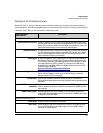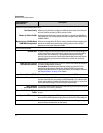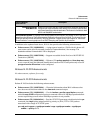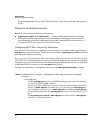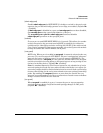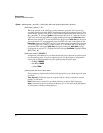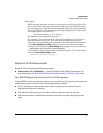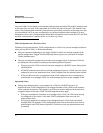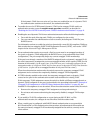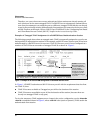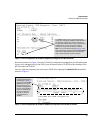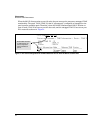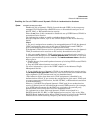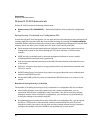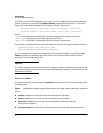
38
Enhancements
Release K.12.05 Enhancements
If the dynamic VLAN does not exist or if you have not enabled the use of a dynamic VLAN
for authentication sessions on the switch, the authentication fails.
■ To enable the use of a GVRP-learned (dynamic) VLAN as the untagged VLAN used in an
authentication session, enter the aaa port-access gvrp-vlans command, as described in
“Enabling the Use of GVRP-Learned Dynamic VLANs in Authentication Sessions” on page 42.
■ Enabling the use of dynamic VLANs in an authentication session offers the following benefits:
• You avoid the need of having static VLANs pre-configured on the switch.
• You can centralize the administration of user accounts (including user VLAN IDs) on a
RADIUS server.
For information on how to enable the switch to dynamically create 802.1Q-compliant VLANs on
links to other devices using the GARP VLAN Registration Protocol (GVRP), refer to the “GVRP”
chapter in the Advanced Traffic Management Guide.
■ For an authentication session to proceed, a ProCurve port must be an untagged member of
the (static or dynamic) VLAN assigned by the RADIUS server (or an authorized-client VLAN
configuration). The port temporarily drops any current untagged VLAN membership.
If the port is not already a member of the RADIUS-assigned (static or dynamic) untagged VLAN,
the switch temporarily reassigns the port as an untagged member of the required VLAN (for the
duration of the session). At the same time, if the ProCurve port is already configured as an
untagged member of a different VLAN, the port loses access to the other VLAN for the duration
of the session. (A port can be an untagged member of only one VLAN at a time.)
When the authentication session ends, the switch removes the temporary untagged VLAN
assignment and re-activates the temporarily disabled, untagged VLAN assignment.
■ If GVRP is already enabled on the switch, the temporary untagged (static or dynamic) VLAN
created on the port for the authentication session is advertised as an existing VLAN.
If this temporary VLAN assignment causes the switch to disable a different untagged static or
dynamic VLAN configured on the port (as described in the preceding bullet and in “Example of
Untagged VLAN Assignment in a RADIUS-Based Authentication Session” on page 39), the
disabled VLAN assignment is not advertised. When the authentication session ends, the switch:
• Removes the temporary untagged VLAN assignment and stops advertising it.
• Re-activates and resumes advertising the temporarily disabled, untagged VLAN assign-
ment.
■ If you modify a VLAN ID configuration on a port during an 802.1X, MAC, or Web
authentication session, the changes do not take effect until the session ends.
■ When a switch port is configured with RADIUS-based authentication to accept multiple
802.1X and/or MAC or Web authentication client sessions, all authenticated clients must use
the same port-based, untagged VLAN membership assigned for the earliest, currently active
client session.



